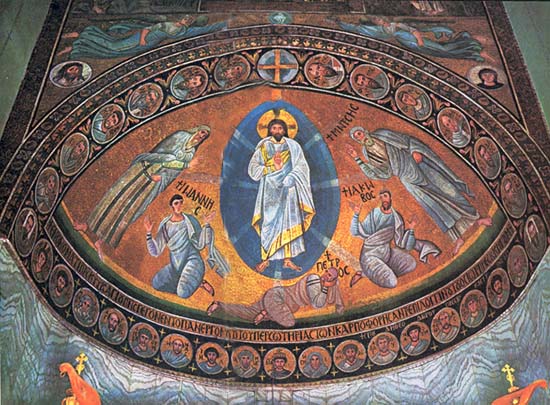Image Details

AMPAE
In the Transfiguration scene Christ is flanked by the full figures of Moses on the right and Elijah on the left with the three disciples below: John on the left, James on the right and Peter gazing at the vision from a position of repose (“Peter [was] heavy with sleep and when [he] awoke [he] saw his glory” Luke 9:32) The medallions surrounding the Transfiguration scene depict the other nine apostles, including Matthias, plus the two evangelists Luke and Mark, and (below) the major and minor prophets of the Old Testament with the crowned, beardless David in the central position. In the corners are the portrait busts of John the deacon, and Longinus, the abbot. Above the cross, on the triumphal arch, is a group known as the Deesis in which the central figure is the Lamb of God, a symbolic representation of Christ. (After the Quinisext Council in 692, symbolic representations of Christ, such as the Lamb of God, were forbidden and Christ was required to be represented only in human form.) This fact dates mosaics with a symbolic representation of Christ before 692. Flanking the Lamb of God are angels offering the scepter and orb to Christ and medallion heads of John the Baptist and the Virgin Mary.
Above the Deesis, on the uppermost zone of the Eastern wall, can be seen the feet of Moses from the lowest fortion of the scene of the Burning Bush (left) and receiving the scroll of the Law.
